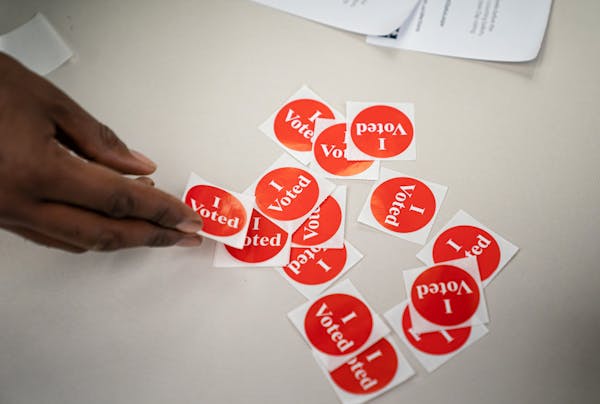This week's historic Minneapolis election saw municipal voter turnout reach a high stretching back at least four decades, as voters reelected the mayor and struck down an attempt to replace the police department.
Voter turnout surged for the third city election in a row, with about 54% of registered voters casting ballots before and on Election Day, according to a Star Tribune analysis of preliminary data. That beats any recorded rates since at least 1979. Wards along the city's southern and western edges saw the largest spikes in engagement.
More than 140,000 first choice votes were cast in the mayoral race alone – a big increase from the roughly 100,000 in 2017.
"This was a confluence of competitiveness, of resources and issues of extraordinary relevance to the lives of Minneapolis residents," said Larry Jacobs, a political science professor at the University of Minnesota. Significant amounts of fundraising and spending during a year characterized by close races and hotly contested ballot initiatives helped drive people to the polls, he said.
While Minnesota is widely recognized for its high voter engagement during general election years, turnout in Minneapolis municipal contests had reached a low in 2009, the same year rank choice voting was introduced to the city. Since then, voter turnout during municipal elections has grown steadily.
Except for the Sixth Ward near downtown, every ward saw turnout increases.
Controversial charter amendments – such as an attempt to replace the Minneapolis Police Department that 56% of voters struck down – and a heated mayoral race may have helped drive higher turnout.
For instance, the city's southernmost wards often deliver among the highest voter turnout during city elections, and were also instrumental in voting down the public safety ballot question. They also saw about a 19-point increase in registered voter turnout this year.
The Second Ward, which includes parts of the University of Minnesota area, also saw a stronger turnout boost. The Eighth and Ninth wards, which encompass places near George Floyd Square, saw significant jumps as well, as did the Tenth Ward that includes Whittier. All showed the strongest support for the public safety amendment.
Minneapolis voter turnout during presidential and midterm election years has ranged from 20 to more than 50 percentage points higher than typical municipal contests during the 21st Century.
Last year's presidential election saw Minneapolis reach yet another turnout milestone at 81%, with absentee balloting driving those numbers up. This year, early voting only comprised 20% of the overall vote.
Carolyn Parnell, 'trailblazer' who served as Minnesota's first IT commissioner, dies


